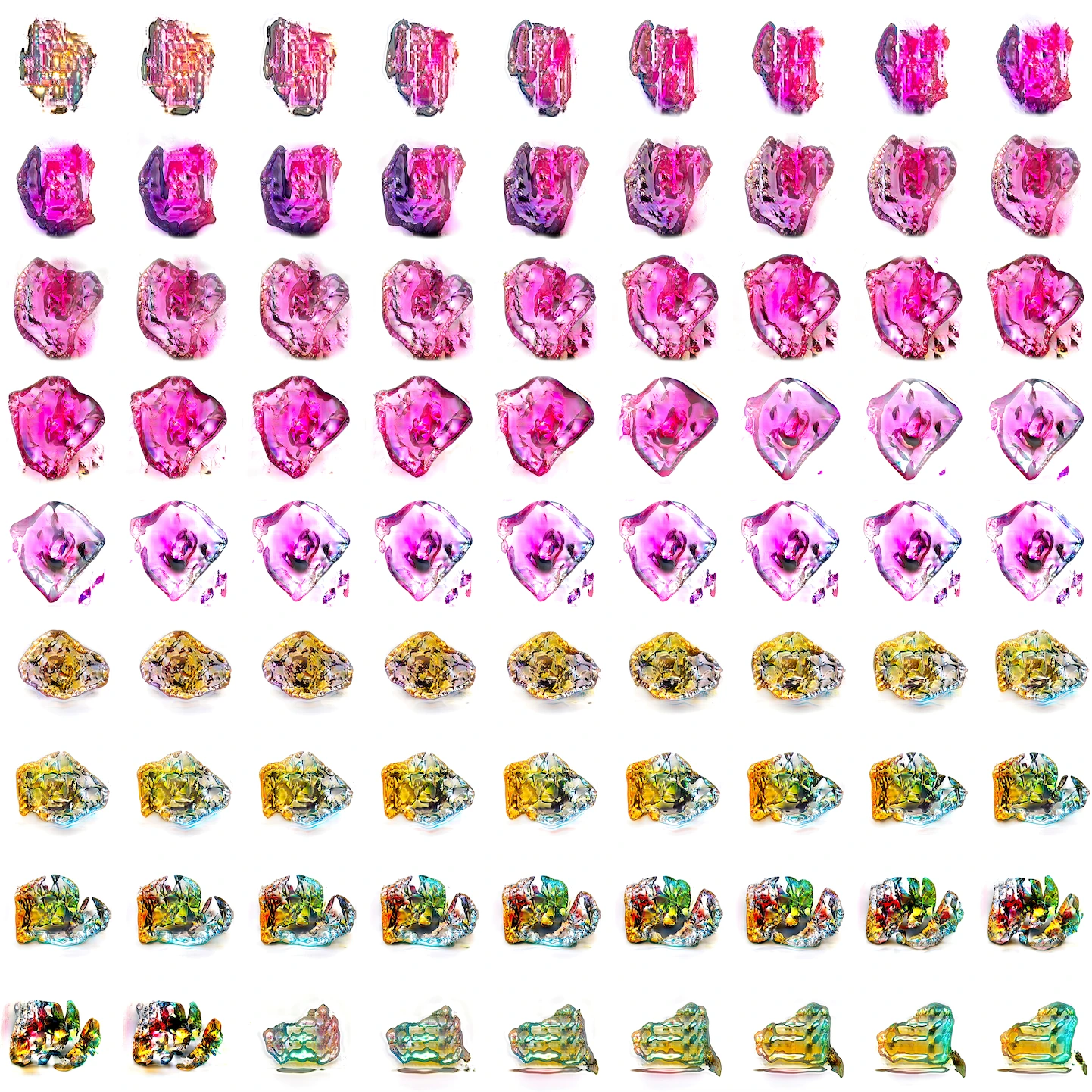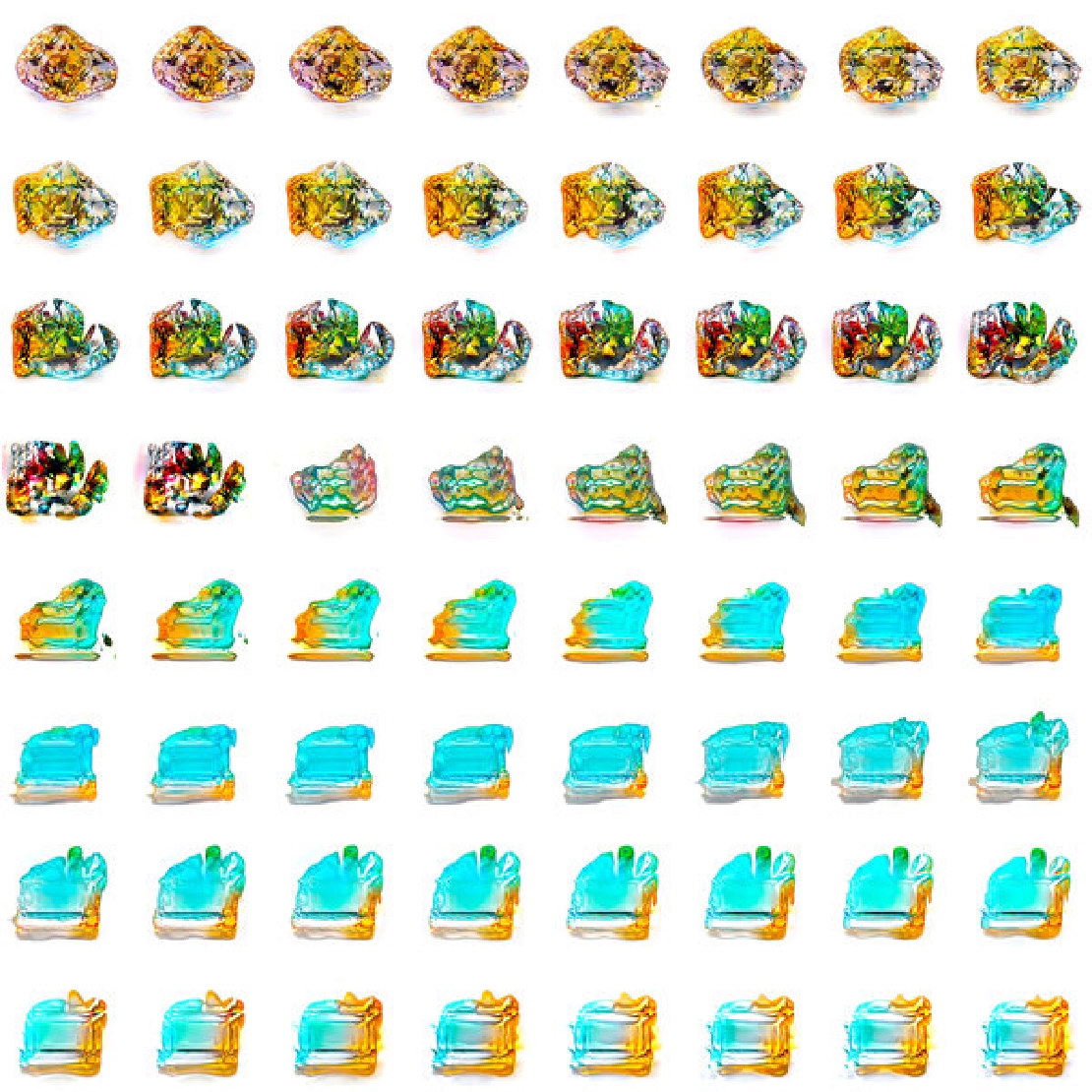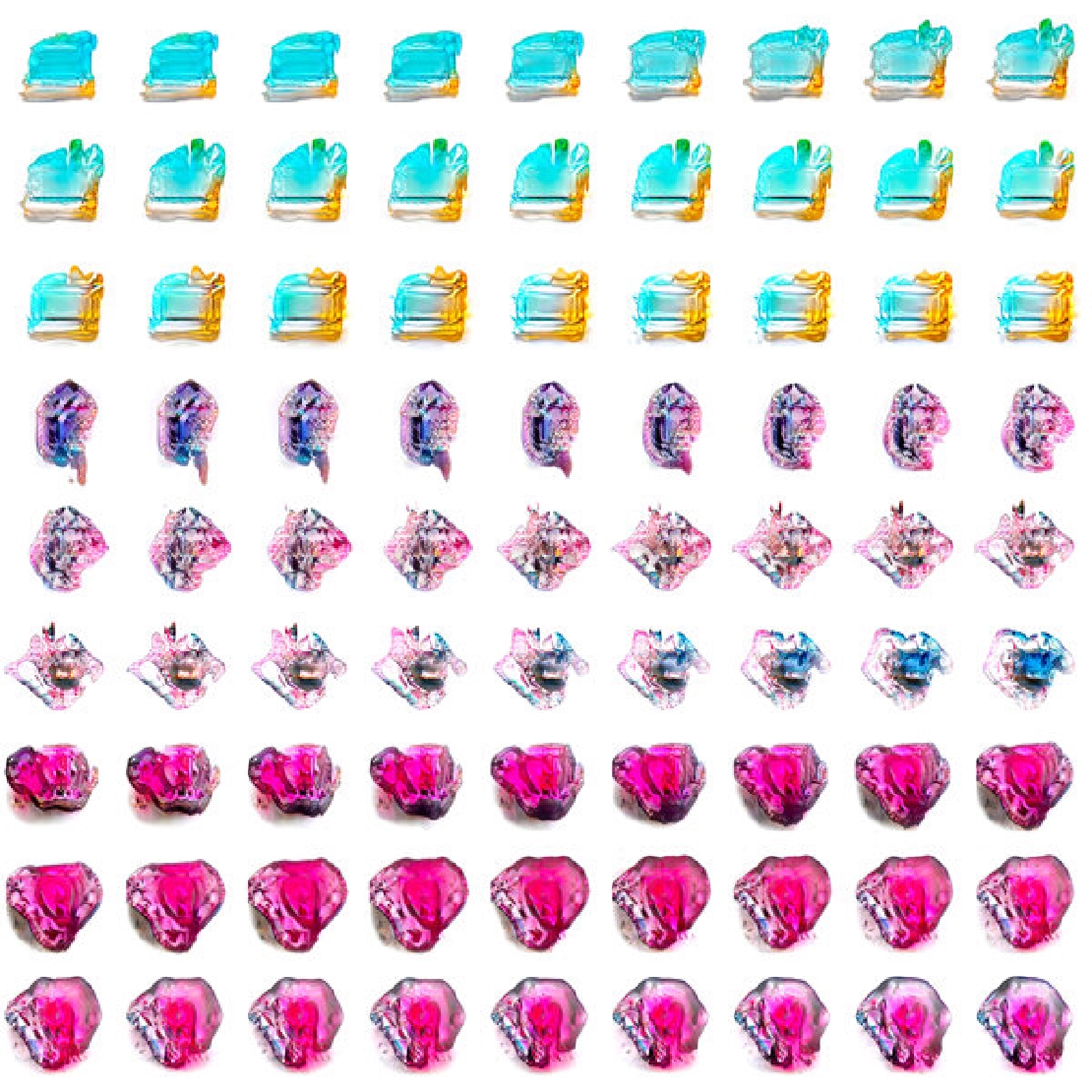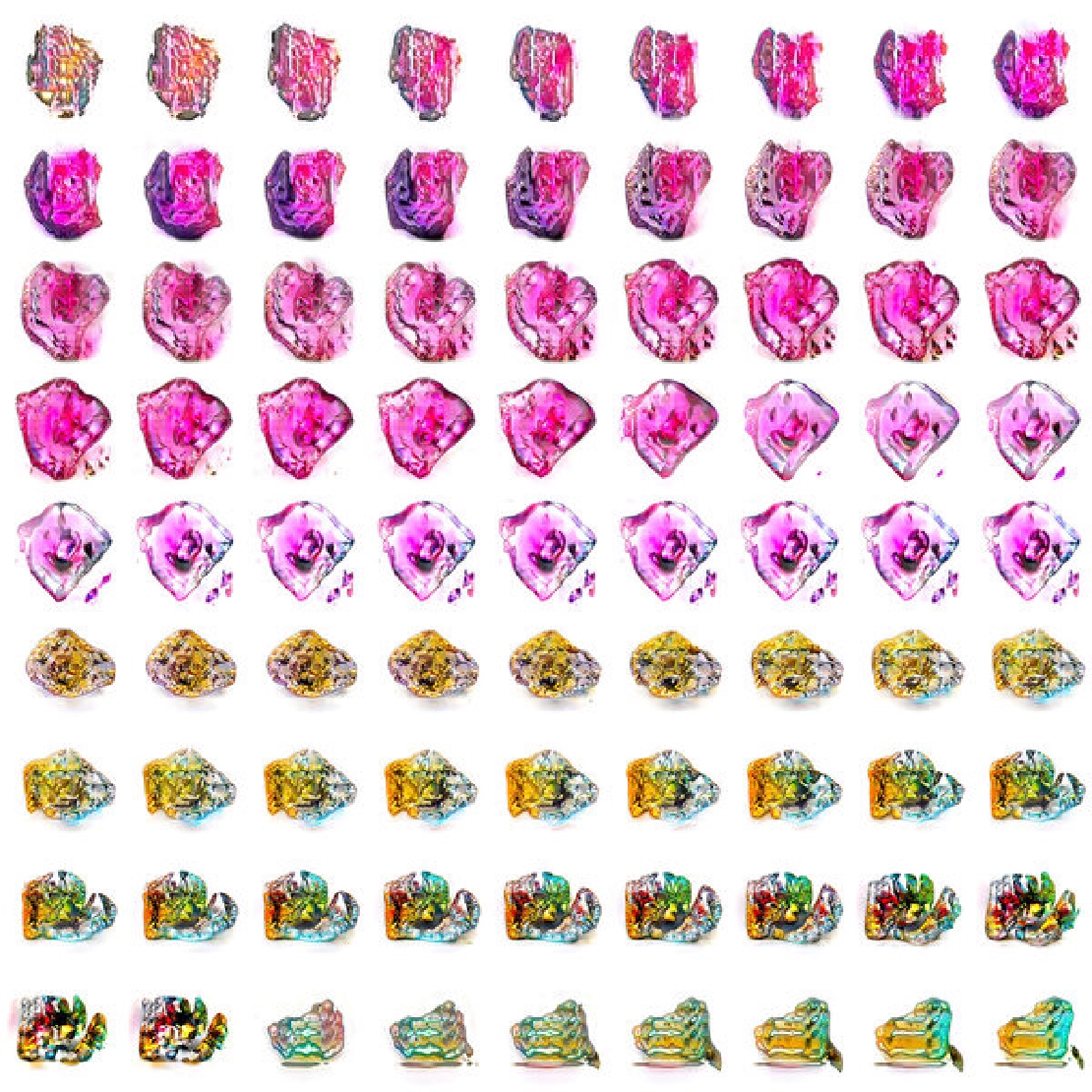Conversation with Anne Spalter on NFTs and “Mining for AI Gems”

Anne Spalter: Crypto Gems
Launches June 24, 2021, Exclusively on MakersPlace
Digital art pioneer Anne Spalter presents in collaboration with Playform Studio, Crypto Gems, exclusively available on MakersPlace. Utilizing artificial intelligence, Spalter explores the concepts of tokens and virtual gems as it relates to the emergence of NFTs. As the art world approaches a new realm of buying, selling, and exhibiting, Crypto Gems both investigates and also inhabits the world of NFTs as a modern-day gold rush; Where the token itself is a precious commodity, yet lies in blockchain infrastructure. Crypto Gems asks viewers what it might mean to be an owner of these kinds of virtual tokens, and what the NFT commodity itself might mean for the future of the art world.
Spalter has incorporated Playform AI into several exhibitions, including at the Spring/Break Art Show in Los Angeles and New York City, Microscope Gallery, the National Humanities Center, SuperRare, and in a current show at the Saint Kate–The Arts Hotel where Crypto Gems is featured as wallpaper. The 8 artificial intelligence-bred gem collections are available as NFTs only on MakersPlace. Once a collector has purchased the work, they can also receive a large-scale print by inputting a one-time code. The NFT will be accompanied by a Verisart certificate with a signature from the artist.



Digital mixed-media artist Anne Spalter is an academic pioneer who founded the original digital fine arts courses at Brown University and The Rhode Island School of Design (RISD) in the 1990s and authored the internationally taught textbook, The Computer in the Visual Arts (Addison-Wesley, 1999).
Her artistic process combines a consistent set of personal symbols with a hybrid arsenal of traditional mark-making methods and innovative digital tools. A new body of work, further developed at a Winter 2019 residency at MASS MoCA, combines artificial intelligence algorithms with oil paint and pastels. She is currently creating work for the blockchain.
Spalter’s work is in the permanent collections of the Victoria and Albert Museum (London, UK); the Albright-Knox Art Gallery (Buffalo, NY); the Rhode Island School of Design Museum (Providence, RI); The Museum of CryptoArt, and others. Alongside her studio practice, Spalter continues to lecture on digital art practice and theory.
Playform Studio Director Mirabelle Alan sat down with Anne Spalter to discuss Crypto Gems and Playform AI.
Mirabelle: Your exhibition Crypto Gems is a collection of 8 NFT works that are also available as prints. Can you walk me through the exhibition?
Anne: Crypto Gems is one of the many Playform projects that I’ve been involved in. It’s based on images of gems, minerals, and crystals from the web. In all of the projects with Playform, you can see the works evolve and grow through the AI capabilities, but this project, it seemed like a particularly relevant metaphor because gems and crystals literally do grow in nature. These were artificially grown by AI, and I was fascinated by the way that by combining all these photographs, new kind of alien-looking gems were appearing and growing. When I was young, I used to get these kits where you could grow your own crystals, it was so fantastic and magical. Crypto Gems is inspired by that experience, but placing it in the context of virtual experiences and blockchain infrastructures - where non-fungible tokens are being minted and collected - the NFT world seemed like the right place for Crypto Gems to end up.
M: Playform plays a large role in many of your works, how has Playform been incorporated into this body of work?
A: In the past I’ve used Playform to work on imagery I was already engaged with, to generate compositions that I probably would never have come up with on my own. In this case, the process was different. The initial imagery by itself would not have been a part of my artwork–it was experiencing the process of new image creation that was interesting. That process is demonstrated in the final images by showing the evolution of several gems in each NFT. With this body of work, I felt that Playform “grew” these final objects, and although I upscaled them and color balanced them and curated the final pieces, these works were artificially bred, artificially grown gems.
M: As a Digital Artist and pioneer in the visual space, why choose AI?
A: Digital tools for working with visual materials haven’t changed conceptually in many years. Although there have been increases in processing power and refinements in many types of image editing and 3D graphics, to me AI image creation is the first significant new way to think visually with the computer that has been introduced in quite a while.
M: NFTs have become a large conversation topic in the art world. As an early adopter to NFTs, do you think that the emergence of NFTs might change the art world as we know it?
A: Yes, I’m hoping that it changes the art world as we know it. The art market is a rare economic system that seems to purposefully make it difficult for people to purchase or sell things.There are some great aspects of the traditional art world, but it also has many issues and some dysfunction that I’m hoping will be positively impacted by NFTs. I think they have the power to show the traditional art world what it could be like if it were easier to produce and exchange art. One of the strengths of NFTs has been the ease with which creators can make their work available to collectors, and the ease for collectors of acting on an acquisition impulse. I know I’m not the only NFT enthusiast who has adding something to their collection with delight at 3am. No one has to wonder if they’re going to get paid or if they paid the price that they should have, because everything is available for everyone else to see. For better or worse, the information is out there, and I think ultimately it is for better.
Transparency and ease of use makes it much easier for people to participate. This new visual economy has brought in a whole new group of people to collect artwork who may never have gone into a gallery in Chelsea and bought a piece. These new collectors are amassing really interesting collections and building out galleries in virtual places like Cryptovoxels. They’re on Twitter discussing their artwork and exchanging information with their friends and other artists about their latest collections. The artists and collectors are tweeting back and forth to one another. I think it’s a really exciting space.
M: There’s also no middleman necessarily, so there isn’t necessarily a hierarchy of who gets to participate and who doesn’t.
A: I do think there is a role for galleries and curators, though. There is an enormous amount of work available online, so some guidance can be helpful.
M: Agreed, tastemakers are still needed. As the founder of the Digital Arts courses at Brown and RISD, you have expertise and insight into the digital art world of course, do you think that this transition to the NFT space means that digital art will take on a larger role in the method of artmaking?
A: I hope so. I think many artists use digital techniques and processes already, even if they don’t list that as part of their medium. Historically, for social and political reasons, digital computer artwork has been looked down upon and has had a real struggle to be accepted. I think the NFT world and the huge sums of money that are pouring into it will help change some of that and change people’s perspective on digital artwork.
M: There’s an argument that AI art isn’t considered real art. What would you say to that argument as a digital artist who does implement AI in your practice?
A: It’s an interesting question because the idea of AI art challenges notions of authorship. It’s a continuum. If I use Photoshop and I apply a filter, Adobe did something, but I don’t list Adobe as a collaborator on my piece. With Playform, there’s a different level of contribution. Playform doesn’t make the work for you, but instead it feels like you’re in the studio working with someone else, you’re contributing together to create this final piece.
M: How did you come to name this exhibition, Crypto Gems?
A: Creating the gems felt like mining for gold or searching for precious stones in a river bed of sand because the process involved trying out and examining a lot of things that didn’t work before finding something that did. When that happens it’s exciting, so, although I’ve never found precious stones in the wild, I imagine it would be similarly exciting to find something so worthwhile after sorting through a lot of not-so-useful things. Even more specifically, I envision parallel processes of identifying “veins” that are promising and following them–in my case image sets that seem to produce particularly compelling results when fed into the AI algorithms.